En ski de randonnée, choisir la bonne longueur de ski consiste à équilibrer contrôle, poids et terrain. Les skis plus courts gagnent en popularité car ils sont plus faciles à manier, plus légers pour les montées et mieux adaptés aux espaces étroits comme les forêts ou les pentes raides. Des options comme les Snowfeet WALKSKI Backcountry Touring Skis (seulement 39 pouces de long) révolutionnent le jeu en étant légers, portables et compatibles avec des chaussures d'hiver classiques - pas besoin d'équipement spécialisé.
Voici le résumé rapide :
- Les skis plus courts (par exemple, 100 cm) = meilleure agilité, moins de fatigue et transport plus facile.
- Les skis plus longs (160–190 cm) = plus de portance dans la POWDER profonde mais plus difficiles à manœuvrer dans un terrain étroit ou technique.
- La technologie moderne = les skis plus courts offrent désormais d'excellentes performances sans l'encombrement.
Si vous débutez en ski de randonnée ou cherchez une configuration plus simple, des skis plus courts pourraient être votre meilleure option. Continuez à lire pour des conseils sur le choix de la longueur de ski parfaite et pourquoi des designs compacts comme Snowfeet valent la peine d'être considérés.
Comment choisir la longueur de ski pour le hors-piste Partie 2 - Longueur du ski
Ce qu'il faut considérer lors du choix de la longueur de ski pour le hors-piste
Choisir la bonne longueur de ski pour le hors-piste ne dépend pas seulement de votre taille - il s'agit de trouver le juste équilibre entre votre morphologie, votre niveau et le terrain que vous comptez affronter.
Votre taille, poids et niveau de compétence
La taille traditionnelle des skis basée sur la hauteur fonctionne bien sur les pistes damées, mais pour les aventures en hors-piste, les skis plus courts prennent souvent l'avantage. Pourquoi ? Ils sont plus faciles à contrôler et aident à conserver l'énergie - deux grands avantages quand vous naviguez sur un terrain difficile. Si vous êtes de petite taille, les skis plus courts peuvent vous offrir un meilleur contrôle et rendre les montées moins épuisantes. Même les skieurs plus grands peuvent bénéficier de l'agilité des options plus courtes comme le Snowfeet* WALKSKI de 39 pouces (100 cm).
Le niveau de compétence est un autre facteur clé. Pour les débutants et les intermédiaires, les skis plus longs peuvent sembler maladroits et difficiles à gérer, surtout dans des conditions de hors-piste imprévisibles. En revanche, les skis plus courts vous permettent de vous concentrer sur l'amélioration de votre technique et de profiter de la glisse. De plus, en milieu hors-piste où chaque gramme compte, les designs légers comme Snowfeet* peuvent économiser de l'énergie lors des longues montées et améliorer vos performances globales.
Mais ce n’est que le début. Le type de terrain que vous prévoyez d’explorer joue également un grand rôle dans la détermination de la bonne longueur de ski.
Type de terrain et comment vous les utiliserez
La longueur de votre ski doit correspondre au terrain et aux activités que vous avez prévues. Si vous vous aventurez dans des forêts denses ou affrontez des pentes raides et étroites, les skis plus longs peuvent sembler encombrants et difficiles à manœuvrer. Les skis plus courts, comme Snowfeet*, brillent dans ces situations. Ils vous permettent de faire des virages rapides et de garder le contrôle, quelles que soient les conditions.
Un autre avantage ? Les skis Snowfeet* sont super portables, ce qui les rend faciles à emballer et à transporter, un vrai changement de jeu quand vous êtes en pleine nature.
Ce changement dans les besoins spécifiques au terrain a conduit à une nouvelle approche de la taille des skis, abandonnant les règles à l'ancienne.
Anciennes vs. Nouvelles règles de taille de ski
Vous vous souvenez de ces tableaux de tailles de skis basés sur la taille ? Ils conviennent toujours pour les pistes damées, mais ne suffisent pas pour le hors-piste. Autrefois, les skis plus longs étaient essentiels pour la stabilité et la flottaison dans la neige profonde. Mais grâce à la technologie moderne des skis, les skis plus courts offrent désormais des performances similaires sans l'encombrement.
Alors que de nombreuses marques orientées station restent fidèles aux tailles traditionnelles pour la performance sur piste, le ski de randonnée privilégie la fonctionnalité et la facilité d'utilisation. Réfléchissez à la façon dont vous utiliserez vos skis : privilégiez-vous la portabilité et la polyvalence ? Si oui, des options comme les Snowfeet* WALKSKI se démarquent. Leur design compact et léger facilite la randonnée et le transport, et ils sont compatibles avec des bottes d'hiver classiques, simplifiant votre équipement.
Les designs modernes comme Snowfeet* montrent à quel point la technologie du ski a évolué, alliant performance et portabilité pour répondre aux exigences uniques du ski de randonnée.
Pourquoi les skis de randonnée plus courts fonctionnent mieux : Avantages Snowfeet*
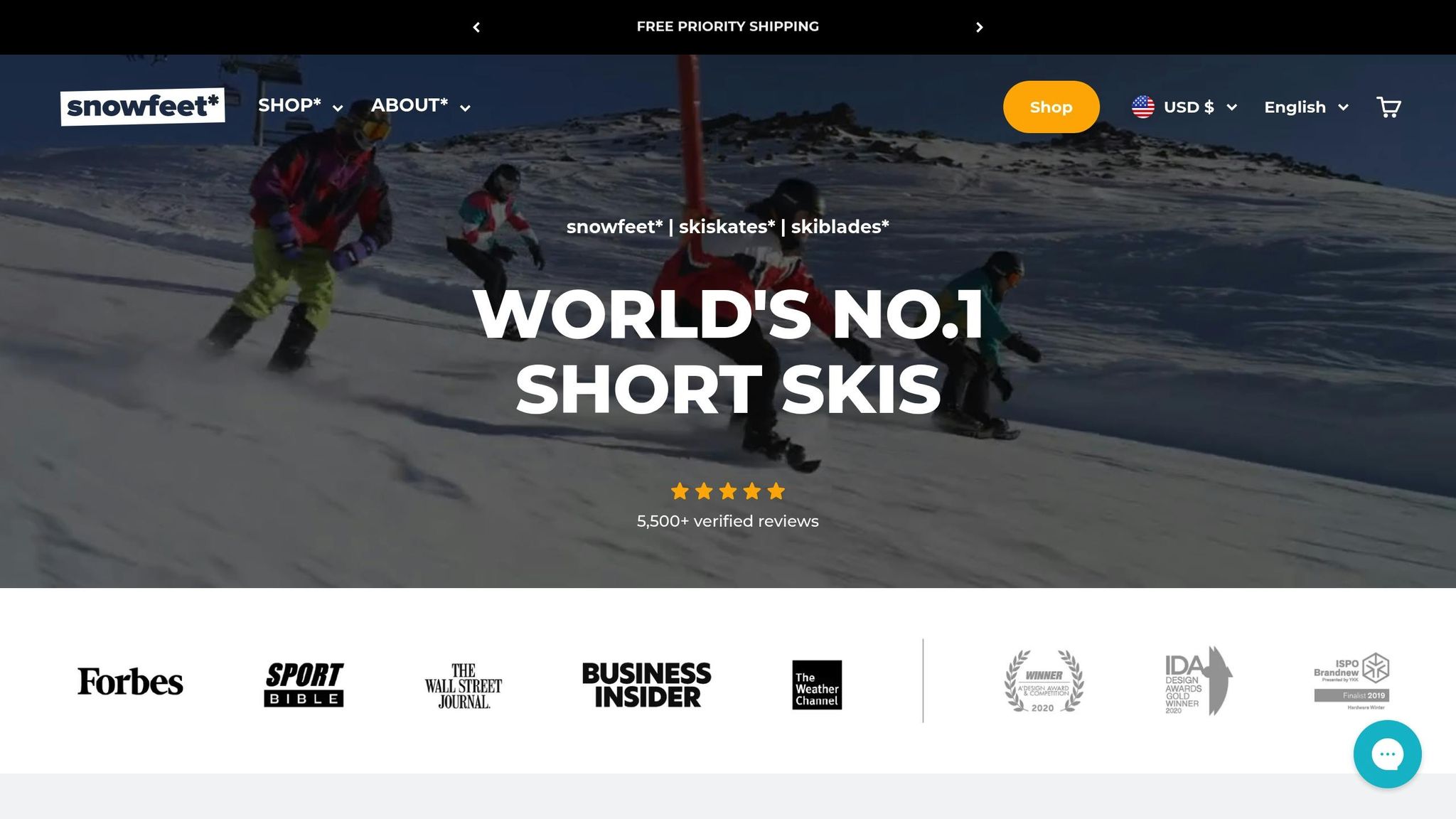
En ski de randonnée, chaque équipement joue un rôle dans la qualité de votre expérience. Alors que les skis longs ont été la norme traditionnelle, les skis plus courts comme Snowfeet* s'imposent comme une révolution à plusieurs égards.
Léger et facile à transporter
La différence de poids entre les skis courts et longs est immédiatement perceptible, surtout lors des montées. Les skis de randonnée traditionnels, souvent de plus de 67 pouces (170+ cm) de long, peuvent sembler un fardeau. Les skis de randonnée Snowfeet* WALKSKI, en revanche, mesurent seulement 39 pouces (100 cm) et adoptent un design plus compact et léger.
"Les skis de randonnée plus courts sont légers et portables, permettant aux aventuriers de les porter facilement sur le dos. La taille compacte de ces skis en fait un choix idéal pour ceux qui valorisent l'efficacité et la commodité sans compromettre la performance." - Équipe Snowfeet
Cet équipement plus léger ne facilite pas seulement leur transport - il aide aussi à conserver de l'énergie pour ces descentes épiques. Et en matière de maniabilité, c'est là que ces skis brillent vraiment.
Meilleur contrôle et mouvement
Naviguer dans des espaces étroits, des pentes raides ou une neige imprévisible exige précision et agilité. C'est là que les skis plus courts comme Snowfeet* excellent. Leur longueur de 39 pouces permet des transitions plus rapides d'arête à arête et des virages plus réactifs, rendant le terrain difficile beaucoup moins intimidant.
Cette maniabilité accrue n'est pas réservée aux pros chevronnés ; les skieurs de tous niveaux peuvent en bénéficier. Alors que les skis plus longs ont leur place pour offrir de la stabilité, ils peuvent sembler encombrants dans les forêts denses, les sentiers étroits ou les sections techniques. Les skis plus courts facilitent les virages en épingle à cheveux, vous permettant de pivoter rapidement et d'économiser de l'énergie. De plus, leur conception agile simplifie votre équipement global, rendant vos aventures en pleine nature plus fluides et agréables.
Fonctionne avec des bottes d'hiver classiques
L'une des caractéristiques remarquables des skis Snowfeet* est leur compatibilité avec les chaussures d'hiver ou de snowboard de tous les jours. Contrairement aux systèmes de ski traditionnels qui nécessitent des chaussures spécialisées (et souvent inconfortables), les skis Snowfeet* vous permettent d'utiliser les chaussures que vous possédez déjà.
Cela signifie que vous pouvez randonner confortablement et passer sans effort de la marche au ski sans avoir à changer d'équipement. Et soyons honnêtes, les chaussures de ski traditionnelles ne sont pas réputées pour leur confort lors de longues randonnées. En gardant vos chaussures d'hiver habituelles, vous bénéficiez du meilleur des deux mondes : confort et praticité.
Avec cette approche, Snowfeet* remet en question la croyance traditionnelle selon laquelle les skis plus longs sont toujours meilleurs. Au lieu de cela, ils proposent une manière plus intelligente et accessible de profiter du ski en backcountry, prouvant que l'innovation ne consiste pas toujours à faire plus grand, mais à faire mieux.
sbb-itb-17ade95
Snowfeet* Skis vs. Skis Longs : Comparaison côte à côte
Plongeons dans les différences de conception entre les skis Snowfeet* et les skis longs traditionnels, et voyons comment elles peuvent transformer votre expérience en backcountry.
Principales différences de conception et de performance
La différence la plus visible ? La longueur. Les skis de randonnée traditionnels mesurent généralement entre 170 et 190 cm (67 à 75 pouces), ce qui les rend longs et, disons-le, un peu encombrants. En revanche, les Snowfeet* WALKSKI Skis de Randonnée Backcountry ne mesurent que 100 cm (environ 39 pouces). Cette longueur plus courte signifie qu'ils sont plus faciles à manœuvrer et demandent moins d'effort.
Le poids est un autre facteur décisif. Les skis longs sont plus lourds, ce qui peut rendre les montées aussi fatigantes qu'un entraînement non prévu. Les skis Snowfeet* sont conçus pour être ultra-légers, vous permettant d'économiser de l'énergie et de vous concentrer sur le plaisir de la descente.
Les fixations méritent aussi d'être mentionnées. Les configurations traditionnelles exigent souvent des fixations et des chaussures de randonnée spécialisées, qui peuvent être coûteuses et moins confortables. Les skis Snowfeet* ? Ils sont compatibles avec vos chaussures d'hiver ou de snowboard habituelles, réduisant les coûts et simplifiant la vie.
Voici un comparatif pratique pour tout résumer :
Skis Courts vs. Skis Longs : Lequel est le meilleur
| Caractéristique | Snowfeet* Skis Courts | Skis Longs Traditionnels |
|---|---|---|
| Portabilité | Légers et compacts ; se glissent dans un sac à dos | Encombrants et difficiles à transporter |
| Maniabilité | Parfait pour les sentiers étroits et les virages rapides | Idéal pour les pistes larges et ouvertes ; moins performant dans les espaces étroits |
| Niveau de compétence | Adapté aux débutants | Nécessite plus de compétences techniques |
| Compatibilité des chaussures | Compatible avec des chaussures d'hiver ou de snowboard classiques | Nécessite des chaussures spécialisées et coûteuses |
| Conservation de l'énergie | Conception légère qui économise de l'énergie en montée | Plus lourd, ce qui fatigue davantage en montée |
| Rangement | Facile à ranger dans de petits espaces | Peut nécessiter des barres de toit ou un espace de rangement supplémentaire |
| Polyvalence du terrain | Parfait pour les forêts, les sentiers étroits et les conditions mixtes | Idéal pour les champs de POWDER ouverts |
| Coût | Investissement global plus faible | Coûts plus élevés pour les skis, les chaussures et les fixations |
Les skis Snowfeet* sont parfaits pour slalomer entre les arbres, gérer les changements rapides de direction et affronter des conditions de neige imprévisibles. Leur conception compacte et légère les rend agiles et accessibles, même pour les débutants. La plupart des riders se sentent confiants avec eux après seulement quelques descentes, rendant les aventures en hors-piste plus accessibles sans compromettre la performance. Que vous soyez nouveau dans le sport ou simplement à la recherche d'un équipement plus simple, les skis Snowfeet* rendent l'expérience plus facile et plus amusante.
Comment choisir le bon modèle Snowfeet*
Alors, vous êtes prêt à plonger dans l'univers des skis compacts - génial ! Maintenant, découvrons quel modèle Snowfeet* est le parfait compagnon pour vos aventures en hors-piste. Snowfeet* propose une gamme d'options adaptées à différents besoins :
- Snowfeet Mini Ski Skates (38 cm) : Avec seulement 38 cm et à 250 $, ce sont les options les plus portables. Ils sont ultralégers, idéaux pour la randonnée et les pentes faciles.
- Snowfeet PRO (50 cm) : Proposés à 275 $, ils offrent plus de stabilité tout en restant compacts. Avec des fixations réglables et des matériaux durables, ils constituent un excellent choix intermédiaire pour les terrains plus raides.
- Skiskates (44 cm) : À partir de 575 $, ils disposent d'un noyau en bois pour des performances accrues. Avec 44 cm, ils sont conçus pour les pistes de ski tout en restant faciles à transporter - parfait pour ceux qui veulent un équipement de qualité professionnelle dans un format compact.
- Skiblades (65 cm et 99 cm) : Le modèle de 65 cm (à partir de 635 $) est parfait pour le carving et les snowparks, tandis que la version de 99 cm (à partir de 675 $) offre plus de polyvalence pour différents terrains. Les deux options utilisent des matériaux premium et sont disponibles en plusieurs designs.
- Snowfeet POWDER (99 cm) : Conçu pour la neige profonde, ce modèle à 675 $ est optimisé pour les conditions de poudreuse tout en restant plus court que les skis traditionnels.
- Snowfeet Short Skis (120 cm) : À 775 $, ce sont les options les plus longues. Avec 120 cm, ils offrent une sensation de ski plus traditionnelle, ce qui en fait un excellent choix pour les skieurs en transition depuis des skis standards.
Maintenant, associons ces options à votre style et à vos objectifs de ski.
Trouver le modèle adapté à vos objectifs
Voici comment choisir selon vos préférences de ski :
- Randonnée et exploration de sentiers : Les Mini Ski Skates ou Snowfeet PRO sont votre meilleur choix. Leur taille compacte les rend faciles à transporter dans votre sac, prêts à être fixés pour la descente.
- Débutants : Optez pour les Snowfeet PRO ou les Skiblades de 65 cm. Leur longueur plus courte offre stabilité et tolérance, vous aidant à gagner en confiance pendant l'apprentissage.
- Terrain mixte : Les modèles de 99 cm (Skiblades ou POWDER) sont idéaux. Ils gèrent aisément les passages étroits en forêt et les pistes ouvertes. Si la neige profonde est votre terrain de jeu, la version POWDER est celle qu'il vous faut.
- Skieurs expérimentés : Les Short Skis de 120 cm sont parfaits pour ceux qui veulent des performances maximales. Ils offrent une sensation de ski familière tout en proposant les avantages des skis plus courts - meilleure maniabilité, transport plus facile et moins de fatigue.
- Options économiques : Les Mini Ski Skates et Snowfeet PRO sont parfaits pour les aventuriers occasionnels, tandis que les Skiskates et Skiblades haut de gamme valent l'investissement pour des styles de ski plus agressifs.
Lors du choix, pensez à ce qui compte le plus pour vous. Si la portabilité est essentielle et que vous restez sur un terrain doux, optez pour un modèle plus court. Mais si vous voulez polyvalence et performance pour des conditions variées, les options de 99 cm offrent l'équilibre parfait.
Une dernière chose - tous les modèles Snowfeet* fonctionnent avec vos chaussures d'hiver ou de snowboard habituelles, donc pas besoin d'équipement supplémentaire. Bon ski ! :)
Conclusion : Pourquoi Snowfeet* est l'avenir du ski de randonnée
L'époque de traîner d'énormes skis de 1,80 mètre à travers les terrains de randonnée s'estompe rapidement. Quand on analyse tout - portabilité, contrôle, polyvalence et pur plaisir - les skis plus courts comme ceux de Snowfeet* changent la donne pour les aventures hivernales.
Pendant des années, de grands noms comme Rossignol, K2 et Salomon ont promu l'idée que des skis plus longs égalent une meilleure performance. Mais en randonnée, ces skis extra-longs peuvent sembler plus un fardeau qu'un avantage. Snowfeet* renverse la tendance avec leur gamme compacte - de 38 cm à 120 cm - prouvant qu'un équipement plus petit et plus intelligent peut offrir des performances de premier ordre sans vous alourdir.
Et voici le clou du spectacle : les Mini Ski Skates Snowfeet* coûtent seulement 250 $. C'est un prix incroyablement abordable pour un équipement efficace, portable et carrément amusant.
Mais Snowfeet* ne se limite pas à l'équipement - il s'agit de créer quelque chose de plus grand. Les fondateurs Zbynek et Michael mènent un mouvement pour faire du skiskating la prochaine grande tendance des sports d'hiver. Ils ne conçoivent pas seulement des produits cool - ils rêvent en grand, espérant voir un jour le skiskating reconnu sur la scène olympique.
Que vous chaussiez les ultra-compacts Mini Ski Skates de 38 cm pour une aventure rapide sur les sentiers ou que vous optiez pour le modèle POWDER de 99 cm pour affronter la neige profonde, Snowfeet* rend le ski de randonnée plus simple et plus agréable. Il s'agit de se débarrasser des tracas et d'embrasser la liberté.
L'avenir du ski de randonnée ne consiste pas à s'en tenir à la tradition - il s'agit d'adopter des designs qui rendent votre expérience plus légère, plus flexible et, surtout, plus amusante. Snowfeet* répond à toutes ces attentes, prouvant que les meilleures aventures viennent d'un équipement intelligent et agile, pas surdimensionné. Alors, êtes-vous prêt à faire partie de ce mouvement ? Snowfeet* vous attend.
FAQ
Comment les skis de randonnée plus courts comme Snowfeet se comparent-ils aux skis traditionnels plus longs en termes de performance et de polyvalence ?
Les skis courts pour le hors-piste, comme les Snowfeet, misent sur l'agilité et la facilité. Ces skis compacts sont parfaits pour naviguer dans des espaces étroits, effectuer des virages rapides et s'aventurer dans de nouvelles zones en toute confiance. Grâce à leur design léger et portable, ils sont particulièrement adaptés aux débutants, offrant une manière moins intimidante de se lancer dans le ski hors-piste.
À l'inverse, les skis traditionnels plus longs sont conçus pour la vitesse et la performance. Ils excellent dans la POWDER profonde, les virages rapides à grande vitesse et les terrains difficiles, offrant une meilleure stabilité et portance à grande vitesse. Alors que les skis longs dominent dans des conditions extrêmes, les skis plus courts de Snowfeet apportent polyvalence et simplicité. Ils sont faciles à manier et s'adaptent bien à une variété d'environnements hors-piste, ce qui en fait un excellent choix pour les skieurs occasionnels ou ceux qui recherchent une option plus flexible et accessible.
Que dois-je prendre en compte pour choisir le bon modèle Snowfeet pour le ski hors-piste ?
Pour choisir le bon modèle Snowfeet pour le ski hors-piste, il s'agit de trouver le mélange parfait de longueur de ski, poids et largeur. Ces facteurs vous aident à équilibrer stabilité, maniabilité et portabilité. Une option remarquable ? Le Snowfeet* WALKSKI. Avec seulement 100 cm de long, c'est un choix compact et polyvalent qui convient aussi bien aux débutants qu'aux skieurs expérimentés.
Si vous débutez en ski, le design simple du WALKSKI en fait un choix convivial et sûr pour apprendre les bases. Pour les plus expérimentés, sa construction légère assure des montées efficaces sans sacrifier le contrôle ni la stabilité à la descente. De plus, comparés aux skis traditionnels encombrants, les modèles plus courts de Snowfeet sont faciles à transporter et à gérer - idéal pour les aventures en hors-piste.
Puis-je utiliser des chaussures d'hiver ordinaires avec les skis Snowfeet, et comment cela affectera-t-il mon expérience de ski ?
Les skis Snowfeet sont conçus pour fonctionner facilement avec vos chaussures d'hiver habituelles, y compris les chaussures de snowboard, grâce à leurs fixations ajustables. Cela signifie que vous pouvez éviter la corvée d'acheter des chaussures de ski spécialisées et plonger directement dans le plaisir - parfait pour les débutants ou toute personne cherchant une configuration plus simple.
En utilisant vos chaussures d'hiver quotidiennes, les skis Snowfeet rendent le ski plus accessible et confortable. Leur design léger et compact vous offre un excellent contrôle et une grande agilité, ce qui en fait un choix fantastique pour les sorties en hors-piste ou simplement des balades décontractées. Contrairement aux skis traditionnels, souvent encombrants et nécessitant du matériel supplémentaire, les skis Snowfeet offrent une expérience fluide et décontractée adaptée aux skieurs de tous niveaux.
Articles de blog connexes
- La vérité sur les skis longs : contrôle, vitesse et trouver le bon ajustement
- Calculateur et tableau des tailles de ski [2025] : Trouvez votre longueur et largeur parfaites
- Guide des longueurs de ski pour femmes : Trouvez votre taille parfaite
- Les principales erreurs que les gens font en choisissant la longueur des skis (et comment les éviter)







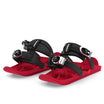
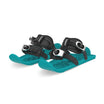












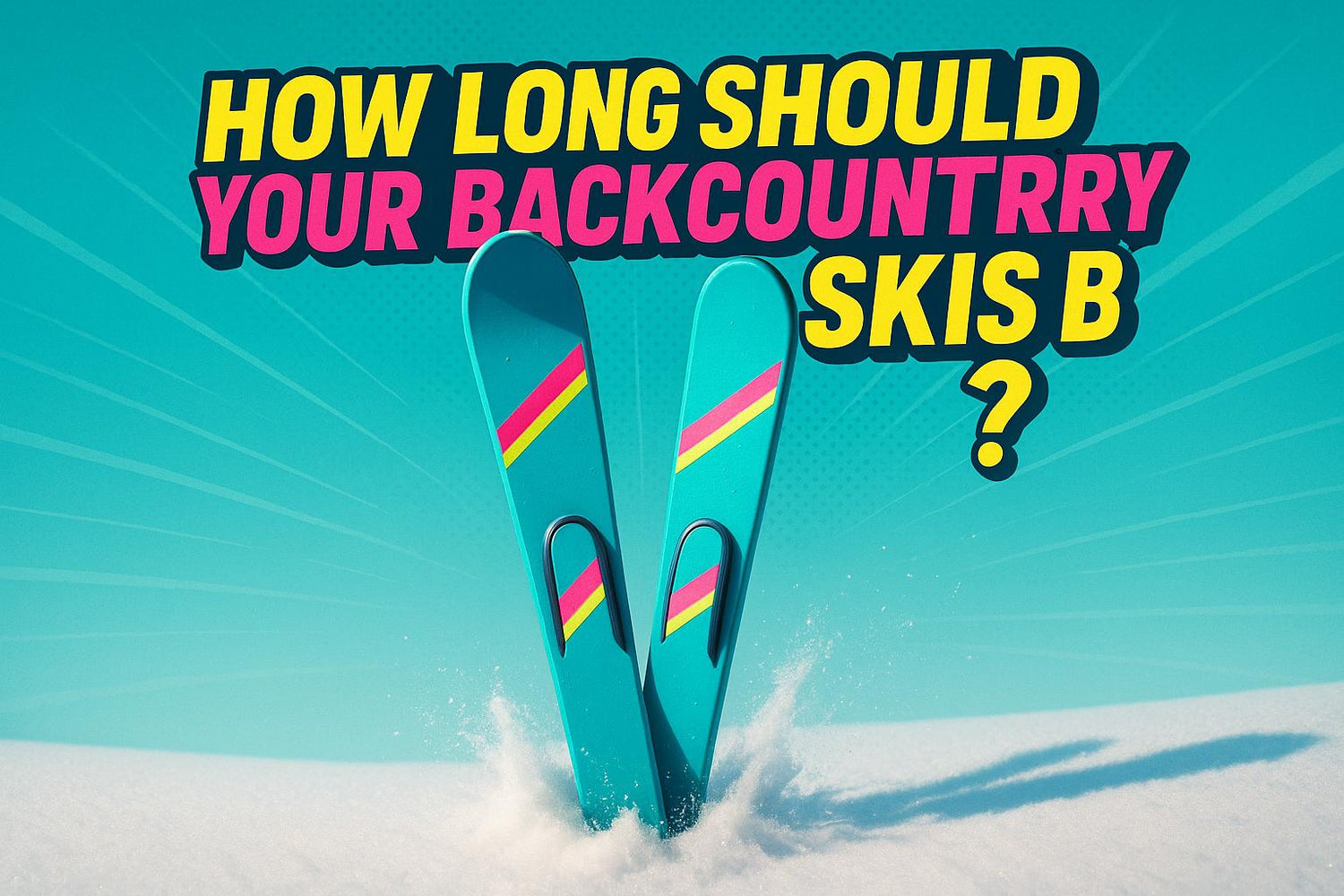






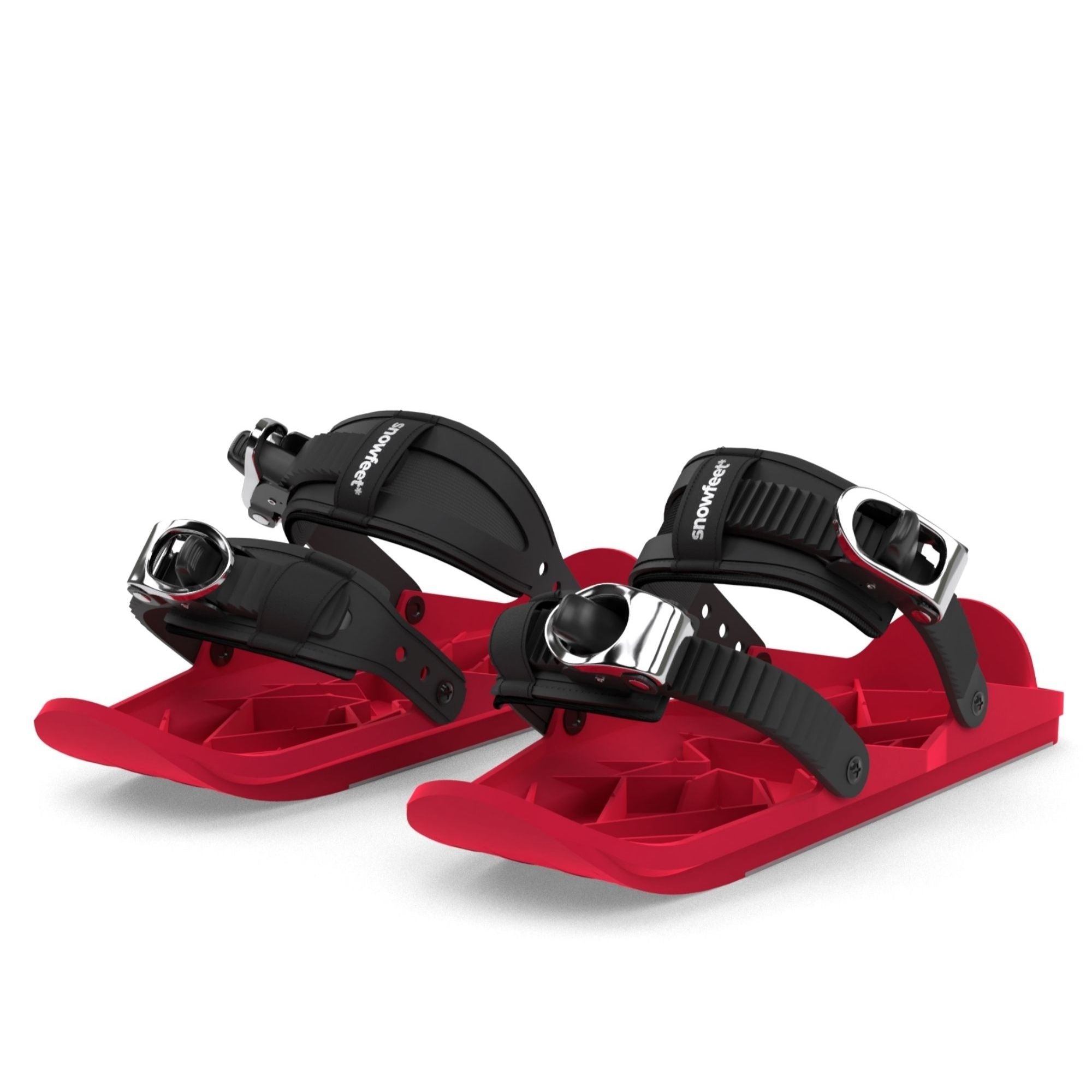
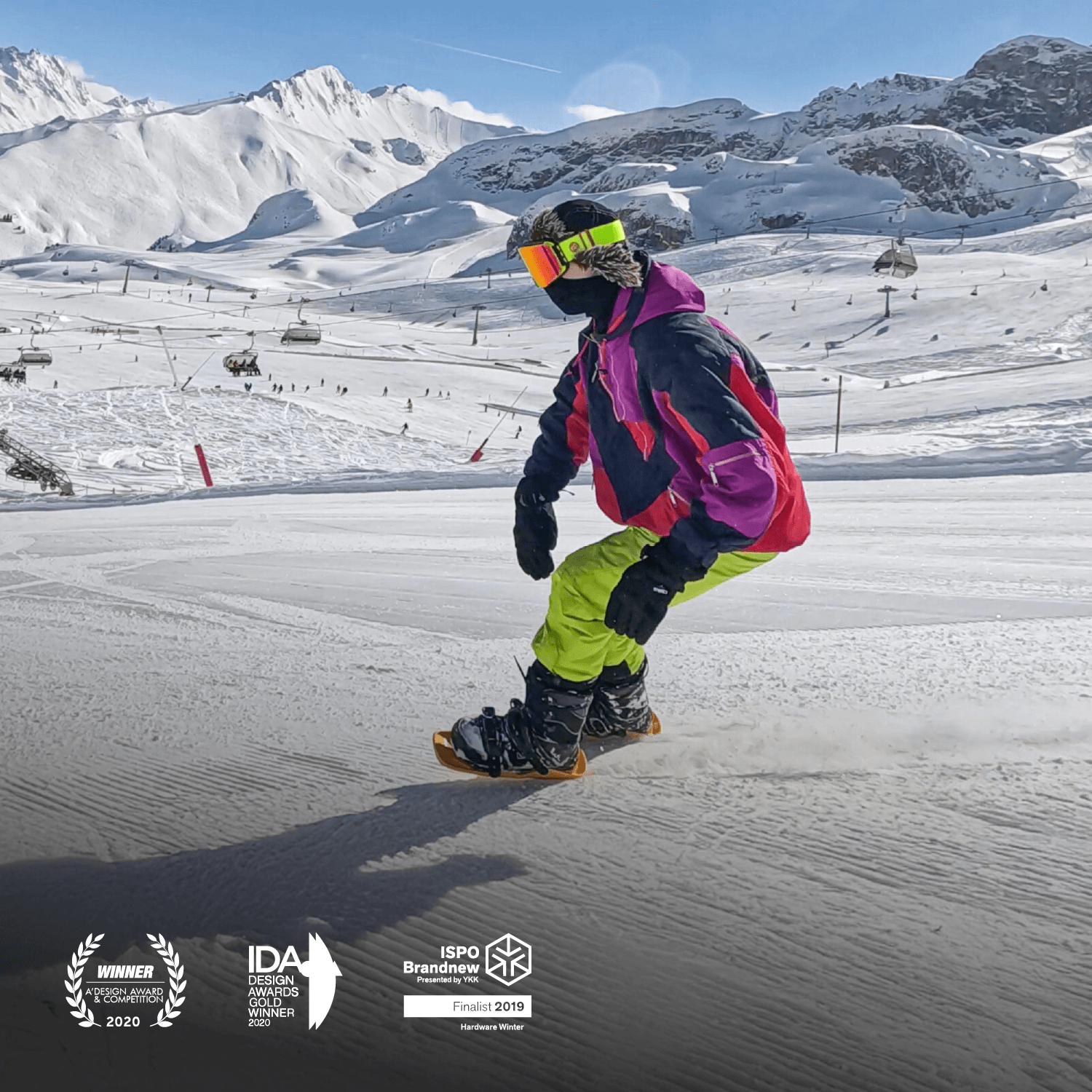




Laisser un commentaire
Ce site est protégé par hCaptcha, et la Politique de confidentialité et les Conditions de service de hCaptcha s’appliquent.